Are you planning to discover France for your next vacation? Very good decision! France has many wonders to offer you. It is the most touristic country in the world. But what to visit and what to do during these 2 weeks in France? Discover here our recommended itinerary to make the most of your stay.
4 days in Paris
How can you imagine visiting France without spending several days discovering its capital, Paris, known worldwide for its beauty, its monuments and its gastronomy. We advise you to spend at least 4 days of your trip there, and even more if you can afford it. Here is a recommended itinerary for these 4 days of discovery.
The Latin Quarter and the Eiffel Tower (day 1)
For this first day in France, start with a visit of the Notre-Dame-de-Paris cathedral and the Sainte-Chapelle which are two magnificent and emblematic monuments very close to each other on the Île de la Cité. You can then choose to stroll in the Latin Quarter a little further south and stop for lunch in a good brasserie. In the afternoon, continue your exploration of the Latin Quarter with a nice walk in the Jardin du Luxembourg and the discovery of the Pantheon. Then take the metro to the Trocadero. You will have a superb view of the Eiffel Tower with the sunset. You can then choose to finish this day by admiring the view from the top of the Eiffel Tower and taking a cruise on the Seine on a bateau-mouche.
The historic heart of Paris (day 2)
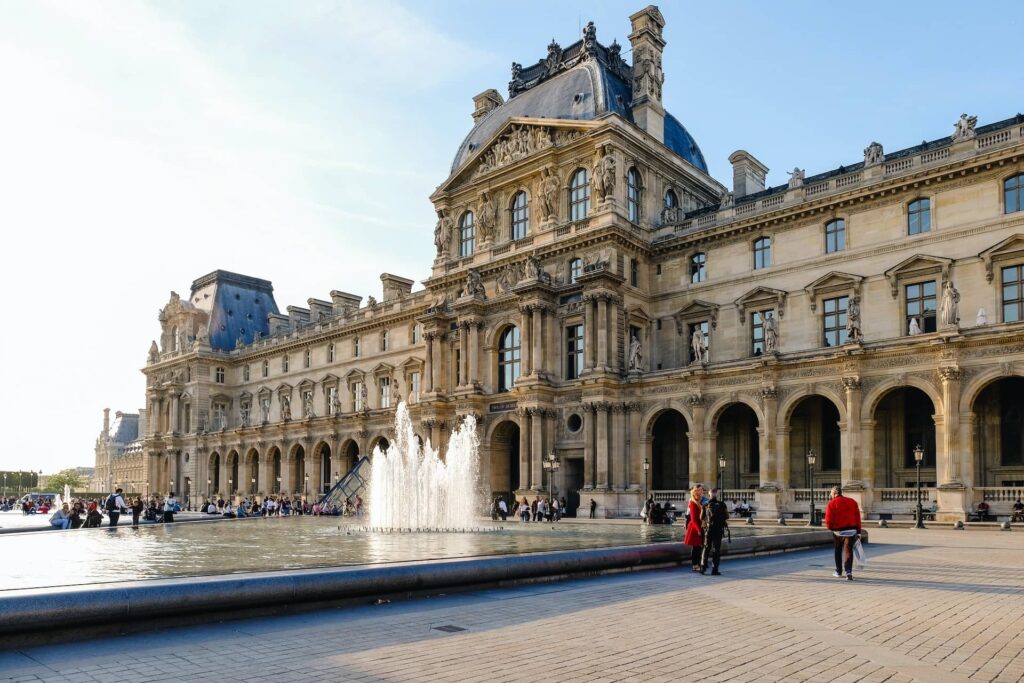
Spend your second full morning visiting the Louvre Museum, famous for housing Leonardo da Vinci’s Mona Lisa and many other magnificent works. It is the largest museum in the world, so it would take several days to visit it all. For a first visit, we advise you to privilege the Denon wing. After this strenuous visit, a good idea is to pick up a sandwich and a macaroon or another French pastry in a bakery near you. You can then have a picnic in the Tuileries gardens, which are adjacent to the Louvre. After a stroll through these beautiful green spaces, take the metro to the Montmartre district. Here you can admire the beautiful Sacré-Coeur Basilica, the picturesque streets filled with street artists, or the magnificent view of Paris. End the day with a show at the Moulin Rouge or a dinner in a typical restaurant nearby.
Discovering the Marais (day 3)
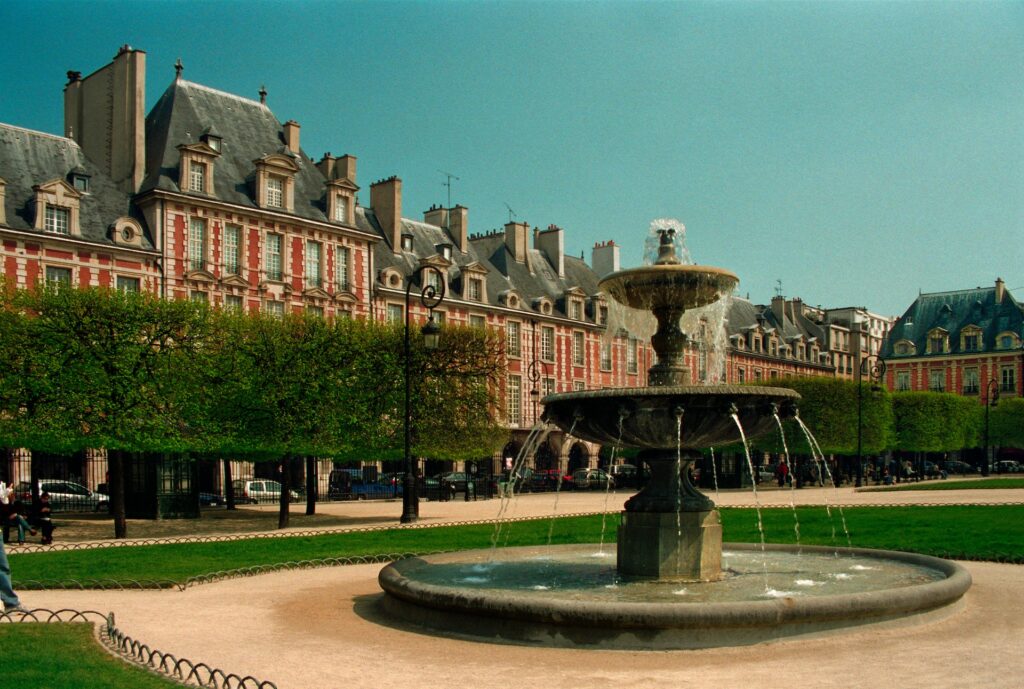
For this 3rd and last day in the French capital, we recommend you to explore the Marais, one of the favorite neighborhoods of Parisians to walk around. Visit the Place des Vosges, the Saint-Paul church before having lunch on a terrace near the Pompidou center, a controversial monument of the city. After lunch, stroll along the Canal Saint-Martin to the Bassin de la Villette to discover another side of Paris. You’ll love ending your afternoon in Paris in the lively Belleville neighborhood. Then enjoy your evening in Paris by exploring the nightlife of the 11th arrondissement.
If you have more time on your hands, we recommend dedicating another day or more to explore Paris. There are still many places to discover in the capital, such as the Grands Boulevards, the big grocery store of Paris, the Buttes-Chaumont park…
The Palace of Versailles (day 4)
The city of Versailles is very close to Paris and can be reached in just 30 minutes by RER. Start your day with an early arrival at the Château de Versailles, a jewel of French heritage and one of the most important symbols of royal absolutism. This historic monument is famous for its magnificent architecture, opulent rooms, such as the Hall of Mirrors, and eventful history. We recommend that you arrive early to avoid long lines and take your time to visit this majestic site. A guided tour can be a good idea to get a feel for the history of the place.
For lunch, the best thing to do is to stay within the grounds of Versailles and have lunch at Angelina’s. If the line is too long or you want to eat elsewhere, then go back and choose among the many restaurants and bistros located in the Saint-Louis district, right next to the castle. The alleys here are actually quite charming.
Spend the afternoon in the vast and beautiful gardens of Versailles. Designed by André Le Nôtre, these gardens are a masterpiece of classical French gardening, with splendid parterres, fountains and statues. If you have the opportunity, don’t miss the Grandes Eaux show, where the fountains of the Versailles gardens come alive to the rhythm of baroque music. As you proceed through the grounds of the palace, you will find Marie-Antoinette’s domain, consisting of the Petit Trianon, Marie-Antoinette’s private residence, and the Hameau de la Reine, a bucolic farmhouse created for the queen to escape from court life. The visit of the latter is included in the ticket of the Palace of Versailles. Finally, we recommend that you visit the nearby farmhouses and enjoy the gardens again before returning to Paris for dinner.
3 days in Normandy
In order to make the most of the rest of your stay, we advise you to rent a car to get around. It is quite possible to continue only by combining the train and buses or shuttles, but this may limit you in your movements and constrain you to certain places and times.
Deauville and Honfleur (day 5)
For this first day in Normandy, get up early and drive to Deauville, about 2.5 hours from Paris. The city is a French seaside resort famous for its Casino, its boards and its fine sandy beaches. The typical architecture of the city with its Belle Époque villas is also a pleasure for the eyes. For lunch, let yourself be tempted by a seafood platter in one of the many restaurants of the port. In the afternoon, head for Honfleur, a small port town not far from Deauville with an undeniable charm, with its Vieux Bassin lined with half-timbered houses. After a good walk and a good Normandy milk ice cream (the region is famous for its milk, cheese and cider), drive to the town of Bayeux where you will spend the night. Don’t miss the opportunity to admire the gothic cathedral of Bayeux illuminated under the starry sky.
The D-Day landing beaches (day 6)
For your second day in Normandy, devote your morning to the discovery of the famous Bayeux Tapestry, a medieval work of art depicting the conquest of England by William the Conqueror. For lunch, a traditional crêperie in the heart of the city is an excellent choice. After enjoying a good galette complete with raw cider, it’s time to immerse yourself in the history of D-Day by visiting the D-Day beaches and the American cemetery at Colleville-sur-Mer. These dune beaches, in addition to being huge and beautiful, are home to many memorial sites and museums. Among the best known and most immersive, we recommend Utah beach, Omaha beach or the small town of Sainte Mère Eglise. Not far from Omaha beach is the largest American cemetery that you must visit in Colleville-Sur-Mer. Places full of history. In the evening, return to Bayeux and enjoy a dinner in one of the many restaurants of the city, where you can taste local cider and Norman specialties.
The Mont Saint-Michel (day 7)
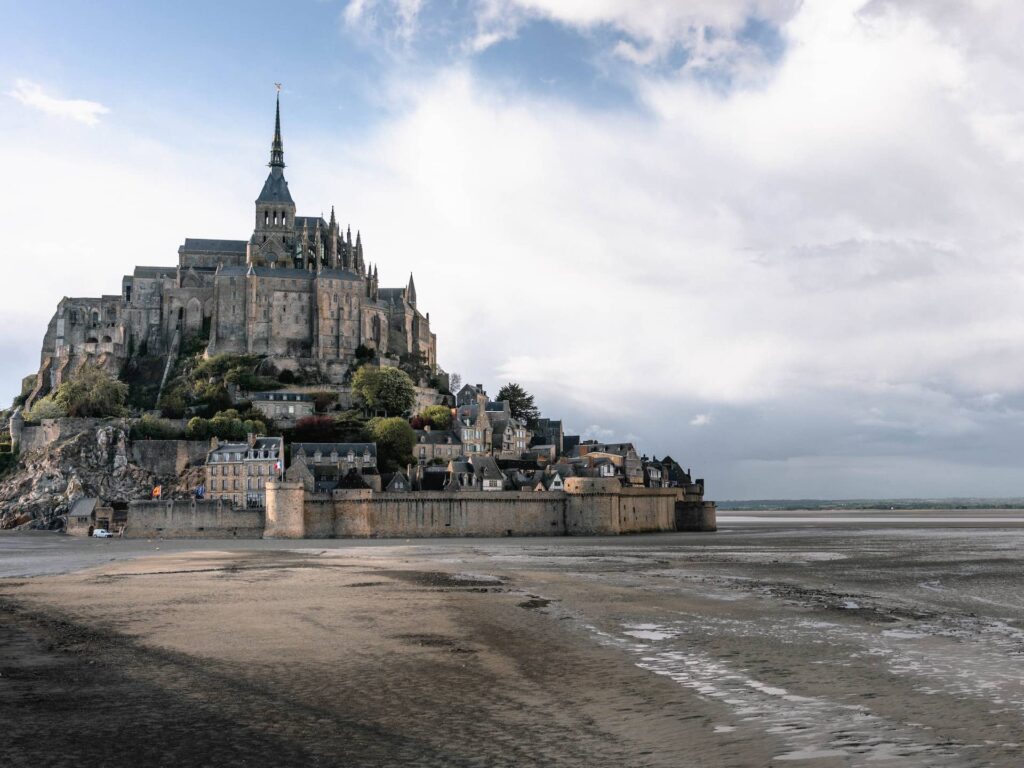
For your third and last day in the beautiful Normandy region, head to one of the most beautiful places in France: the Mont Saint Michel. This emblematic monument, perched on a rock in the middle of a huge bay, is a real wonder to discover. Its abbey which overhangs the place is dedicated to the archangel Saint-Michel, defender of the Good. Admire the famous quicksand around the mount and then take the time to have lunch in one of the many restaurants of the village. Be careful, the place is extremely touristic and not all the restaurants are of good quality. If you want to live a real experience, we advise you to go and taste the very famous omelette of the Poulard mother. In the afternoon, you can lose yourself in the narrow streets of Mont Saint-Michel and climb up to the abbey. The place becomes even more beautiful at sunset.
If you loved Normandy and want to spend more time there during this trip or the next one, there are still many places of interest such as the cliffs of Etretat, the city of Rouen, the cider road… In the meantime, let’s continue our itinerary a little further south to discover the wonderful castles of the Loire Valley.
3 days to discover the castles of the Loire Valley
Visit of the city of Blois (day 8)
If you have followed our proposed itinerary, then the morning will be spent driving to the city of Blois in the Loire Valley. Once you arrive, we recommend that you start by discovering the Royal Castle of Blois, a splendid and emblematic monument that offers a true retrospective of the arts and history of the Loire castles. Afterwards, stroll through the old town of Blois, north of the castle, and choose a local brasserie for your lunch. This is an opportunity to taste the wonderful world-famous wines of the Loire. In the afternoon, extend your discovery of Blois with a walk through its picturesque streets, half-timbered houses and lively squares. Finish your day by going to bed early, because tomorrow it’s off for 2 days of cycling!
The Castle of Chambord by bike (day 9)
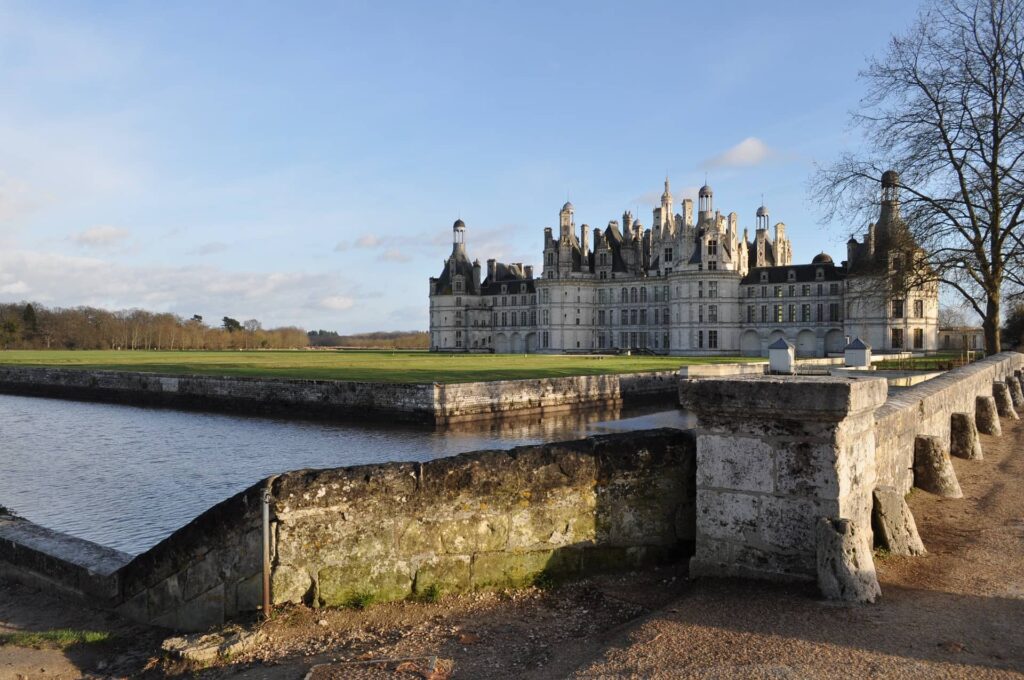
Get up early, have a good croissant for breakfast and plan a picnic for lunch. Today, you will leave your car in Blois and rent bicycles for a 2-day tour of the Loire castles. Bike paths are everywhere in this region which receives many tourists by bike every year. It must be said that the vegetation offers very beautiful paths, punctuated by castles and wine estates. First of all, let’s go to the Chambord Castle, 20km from Blois, a masterpiece of the French Renaissance built by François I. It is famous for its unique architecture, its original staircase and its impressive park. It is one of the most emblematic castles in the region, and certainly deserves a few hours of your time. After this visit, enjoy a picnic lunch to savor in the castle’s extensive gardens. Then, drive back to Cheverny. This part of your journey takes you through the picturesque Loire countryside, a sight not to be missed. Upon arriving in Cheverny, take time to rest at the hotel and dine at one of the local restaurants, again taking the opportunity to taste the local wines.
Cheverny and vineyards by bike (day 10)
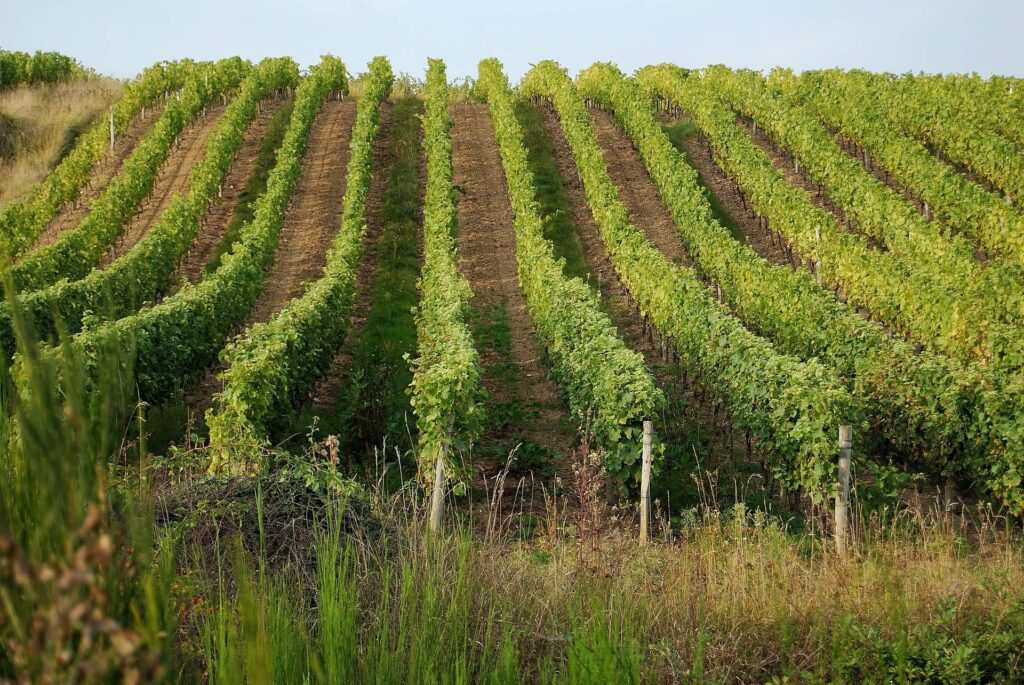
For this third and final day in the Loire Valley, leave your bike at the hotel for the moment and go explore the Castle of Cheverny, known for its beautifully preserved interior and impeccably maintained gardens. It was this castle that inspired Hergé to draw the castle of Moulinsart, home of the famous hero Tintin. After visiting the castle, take time for lunch before cycling back to Blois. If you have time, don’t hesitate to stop at one or two wineries on your way. Depending on the season and the mood of the winemakers, some estates can be visited without a reservation. The winegrowers will make you taste their best wines while explaining how they make these beautiful Loire wines. An unforgettable experience! Finally, the return trip to Blois is once again an opportunity to admire the beauty of the French countryside before returning the bikes and resting for the rest of your 2 weeks in France. Perhaps you’ll come back to the area later to discover the other castles in the area such as Chenonceau or Amboise.
3 days in Provence
Here is the last step of your 2 weeks stay in France. To finish in the sun, we propose you to discover the south of France, more precisely the region Provence Alpes Côte d’Azur (PACA). Between the lavender fields and the Mediterranean coast, we are sure you will love it!
Lavender fields (day 11)
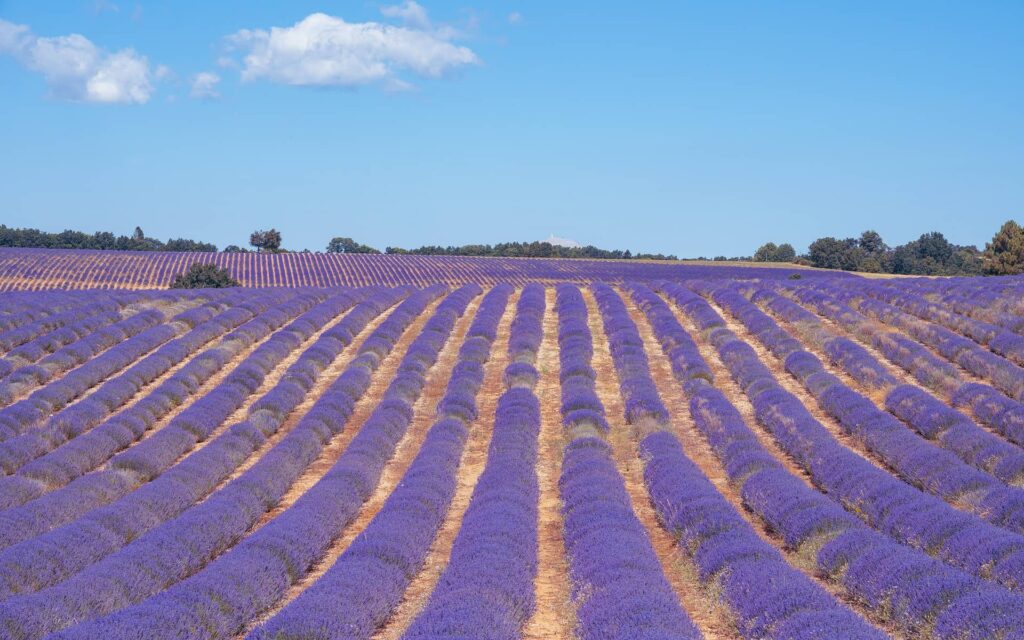
If you follow our suggested itinerary, you will have to spend part of this day on the road. Indeed, to go from Blois to our next destination, it takes 6 hours. Fortunately, the French landscapes are green and hilly, which makes them beautiful. On the way to Provence, you will certainly find a small village where you can have lunch and take a break in Auvergne or elsewhere. Then, by mid-afternoon, you should arrive at your destination: the beautiful village of Sault, nestled in the hills of Provence. Upon arrival, be dazzled by the purple glow of the lavender fields, a true icon of the region. Take the time to walk through these fields, so soothing. A real treat for the senses and for photographers. If it’s still early, you can then make a stop at a local distillery to understand the process of turning lavender into essential oil. Finish your day by resting in a charming inn while tasting the good rosé wine of the region, because tomorrow you will leave for an exploration of the papal city, Avignon.
The papal city of Avignon (day 12)
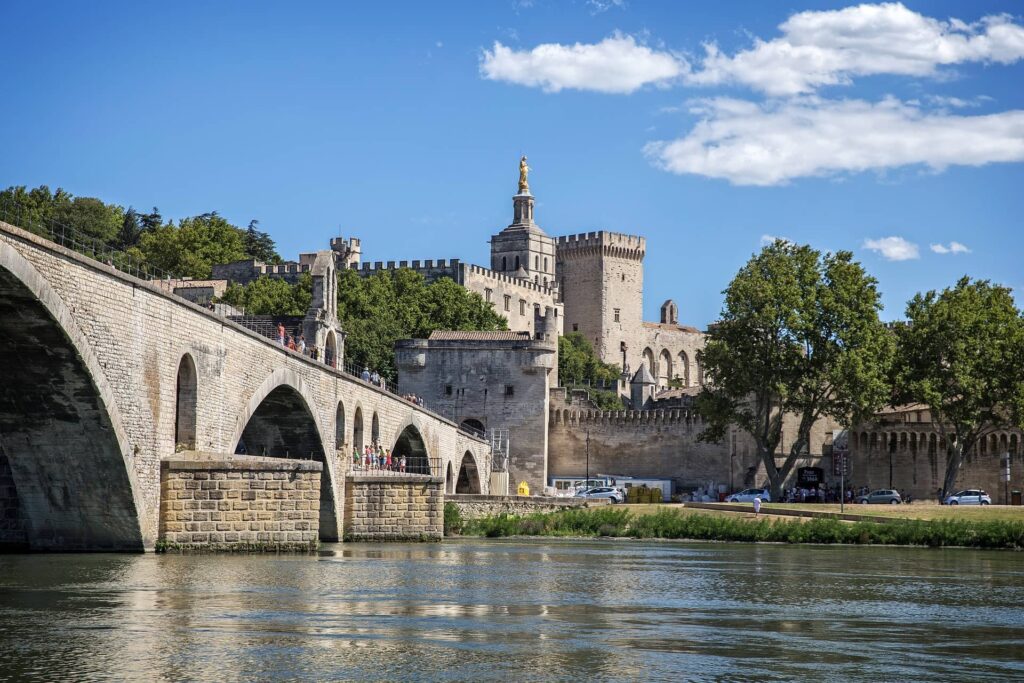
Get up early, enjoy a good cup of coffee and get ready for a cultural day. Today you will leave Sault behind and head to Avignon, commonly known as the Papal City. It is so named because it was the seat of the papacy from 1309 to 1377, during which time 7 consecutive popes, all French, ruled over Christendom from this city. The Palais des Papes awaits you, majestic and imposing, offering a fascinating journey through the history and art of Provence. The building, once the residence of the popes, impresses with its gothic architecture and its vast halls. After the visit, spend the evening strolling through the old town of Avignon, with its picturesque streets and charming squares. The sweetness of life in Provence.
On the way to Nice (day 13)
For this third day in the South of France, you will leave Provence to join the French Riviera. It takes about 2 hours to reach the city of Nice and its famous Promenade des Anglais. This big city is very charming and has a real Mediterranean atmosphere. Start with a stroll along the Promenade, admiring the azure sea. Then head to the Old Nice and the Cours Saleya flower market, for an explosion of colors and scents. After lunch, you can choose to dedicate your afternoon to culture, by visiting for example the Matisse Museum and the Marc Chagall Museum, or go visit a cute little town nearby like Cannes or Antibes. For dinner, let yourself be tempted by the French local specialties in Nice, such as the Socca or the Pissaladière.
Here you are at the end of these 2 weeks in France. Through this journey, you will have been able to discover the French heritage under several angles. But there are still many other French regions and cities worth visiting for your next stay. Why not the great gastronomic city of Lyon? Or the small mountainous villages of the Santiago de Compostela route? Or maybe you’d prefer the wild coastline of Brittany. France is a country with a thousand facets that deserve to be discovered.